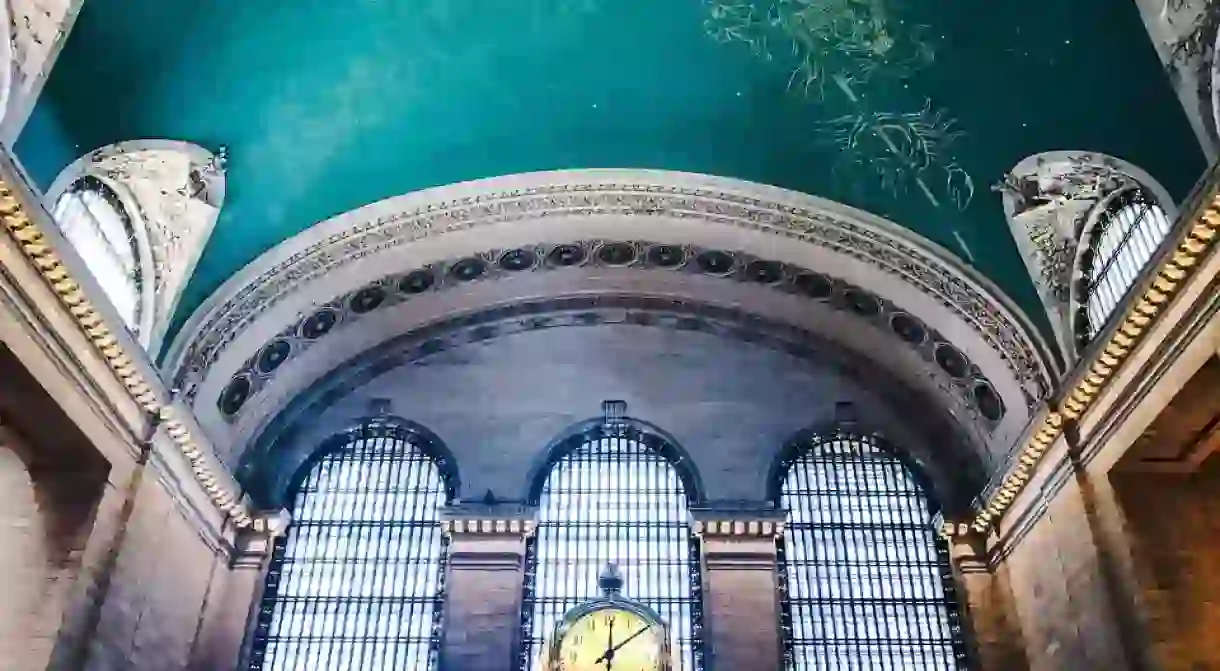The Story Behind Grand Central Terminal’s Beautiful Ceiling

It’s a testament to the ceiling’s beauty that with so much activity occurring at eye-level at Grand Central Terminal, visitors still find themselves staring upwards. The embellished attraction has been turning heads, literally, since 1913. However, as with any New York beauty, there’s more to Grand Central Terminal’s ceiling than meets the eye.
Modern-day admirers may not know that the current Grand Central Terminal ceiling isn’t the first. The original was constructed prior to the terminal’s opening in 1913 and took dozens of people to create, including painter Charles Basing of the Hewlett-Basing Studio in Brooklyn, astronomer Dr. Harold Jacoby of Columbia University, an artist, a muralist, and an architect. The workers painted the mural directly onto the Terminal’s plaster ceiling, a commitment which would prove to be misguided.
Less than two months after the Terminal opened, a commuter from New Rochelle noticed a mistake in the mural: it would seem that the depiction of drawings from Johann Bayer’s 1603 star atlas Uranometria was backward, with west facing east and vice versa. What’s more, one of its figures, Orion, was painted in an astronomically incorrect position. As the astronomer of the group, Jacoby racked his brain for an explanation of this error, attributing it, finally, to a misunderstanding about how the diagram was meant to be held. Basing, on the other hand, reportedly “showed little interest in the technical defects and added that he thought the work had been done very well.”

Unfortunately, the hiccups related to Grand Central Terminal’s ceiling would keep coming. By 1924, just 11 years after the mural was painted, a leaky roof had created embarrassing discolorations. Two decades later, most of its one-time brilliant gold star beams had flaked off, leaving the ceiling in faded dimness. By August of 1944, the city had no choice but to repair the moldy mural and dilapidated roof, a feat which they declared finished less than one year later. Street-savvy New Yorkers can guess what took place: rather than restore the intricately detailed mural, the city covered the ceiling with sheets of cement-and-asbestos board painted with a simplified version of the original design.
Thus, while many remain in awe of Grand Central Terminal’s ceiling, those familiar with its history can’t help but notice the many flaws of the mid-century incarnation. Due to asbestos-related concerns, it’s unlikely that the so-called restoration panels will ever be removed to reveal the original mural underneath. Luckily, most locals are happy to overlook the ceiling’s flubs in exchange for the rare view it provides: the stars over New York City.













